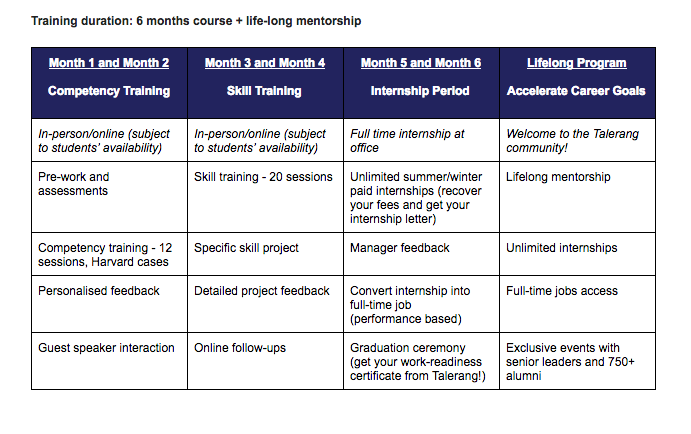The Student Perspective: Is the EdTech bubble about to burst?

With the onset of the Covid- 19 pandemic, we have witnessed massive advancements in the educational technology sector; the year 2020 marked a watershed moment in the development and wide reception of edtech. About two years ago, edtech was limited to just some of its currently existing elements – online courses, training. The evolution of education technology has led to the inclusion of several other components in the industry, like tuitions, online school, upskilling for young adults, MOOCs and so much more. Its arrival has been characterized by a veritable shift, transitioning from the traditional classroom learning method to a completely online setup. Platforms such as Coursera, Leap Scholar, edX, Khan Academy, Byju’s, etc, existed earlier as well, but have now gained an exceptional welcome in households and offices, so much that it is safe to define their presence as ubiquitous.
Being the most funded one in 2020, the edtech sector continues to witness an escalation of investments. However, with rising success like that of Icarus, one wonders whether the fall will be as quick as his, too. According to Greek mythology, Icarus, the son of a master craftsman had been ordered to stay far from the sun, to prevent the wax in his wings from melting. Icarus, however, flew too high. His fall was as expeditious as his rise. Is this also the case with the edtech sector? Does the rapid flow of investments insinuate the bursting of the edtech bubble? Has a bubble even been forming?
Think of a real-life example:
A bubble bursts because it becomes big and there is no fundamental support from beneath, and it being made of a very thin film, is inherently weak and tends to burst naturally. The bigger it grows, the weaker it becomes; the possibility of it bursting into nothing becomes more imminent. An economic bubble also works similarly.
There are numerous factors driving the growth of this industry. Most importantly, it is the overall digitization of everything and the rapidly technology-consuming, keypad-happy generation that take forward this concept. The idea of education technology is a lot more inclusive than the conventional teaching methods; different courses offer to teach in several languages, making edtech a well-liked and popular choice. Moreover, edtech fosters innovation and creativity within us all. It helps us build on design thinking, which is increasingly becoming an important thinking aspect. Things such as the Google ‘Jam Board’, ‘Popplet’, and ‘Explain Everything’ help users in brainstorming and presenting their ideas creatively. The integration of such features in edtech is a major driving force for the industry and certainly boosts its growth and consumption rate. Many edtech platforms have also incorporated games and quizzes to make learning more fun and appealing. 70% of students have stated that gamification has motivated them to take up more courses online. In a single year, India’s internet services usage grew by 14%, which incites growth for edtech start-ups. Edtech opens up the possibility of on-demand learning at a time and place, as well as the pace of the user’s choice. One can learn from overseas experts, without ever having to travel beyond home, suggesting more traction for this concept.
A large group of students has said that they prefer the online technique, as it caters to their fluency in technology, and allows them to learn from their own comfort zone. However, many students are of the opinion that the online mode is just convenient, not useful. According to most people, it paves way for distractions and makes it difficult for students to give it their undivided attention. As claimed by all, technology in education has also laid the foundation for sharp pain in the eyes and head. Nonetheless, a large percentage of students have said they prefer online learning.
Education technology houses many components now – online school, online upskilling training, tuitions, extracurricular classes, courses, etc. As previously mentioned, edtech’s footprint is pervasive; this entails the idea that more and more people are now investing in educational technology. A lot of people I know have purchased services from edtech platforms like WhiteHat Junior, Coursera, edX, and so on. The demand for such services has been at an all-time high. As the demand increases, the supply has shot up too. Edtech enjoys being the nexus of all that is trendy. Technology has built its place in society, today; its reach is wide and unavoidable. As of June, ’22, there are 35 unicorns belonging to the edtech sector. In recent years, 48,000 K-12 edtech start-ups have been launched globally.
The paramount purpose of the edtech industry is education. Hence, the focus of the industry must not divert from the quality of learning provided. The fundamental value of edtech lies within how well it answers these questions: Has it been a helping hand to learners and made them better understand concepts? Has it added a tint of creativity to make learning a fun experience? Is it able to make learning interactive? Currently, the wave of edtech is riding high. It yields positive answers to all the questions listed above.
There is no doubt that edtech lacks the whole element of learning physically– we cannot truly learn football looking at a screen; the experience of on-ground learning forever remains unparalleled. However, edtech rises above these flaws and makes us look at the concept slightly sans the drawbacks. With its main USP being that it does not limit learning to a specific time and place, edtech also helps one have easy access to resources, immerse themselves in creative learning techniques, and most importantly – be better digitally literate.
Returning to learning in an exclusively offline mode is almost improbable. With technology gradually taking over the world, the educational technology revolution was inevitable. Moreover, it was vital to make people more digital-friendly. The Indian edtech sector has accumulated an amount of $4bn in 2020 and 2021 and is believed to expand to $30 bn in size, in the next ten years. The increment of this sector suggests its prevalence in the near future. Edtech is pretty much in demand and is cautiously progressing towards being an absolute necessity. This industry has become quite the propitious one, showing that the edtech bubble is not going to burst any time soon.
Written and Edited by: Arya Rajhans
An Alum of Talerang’s Reality Bytes.




